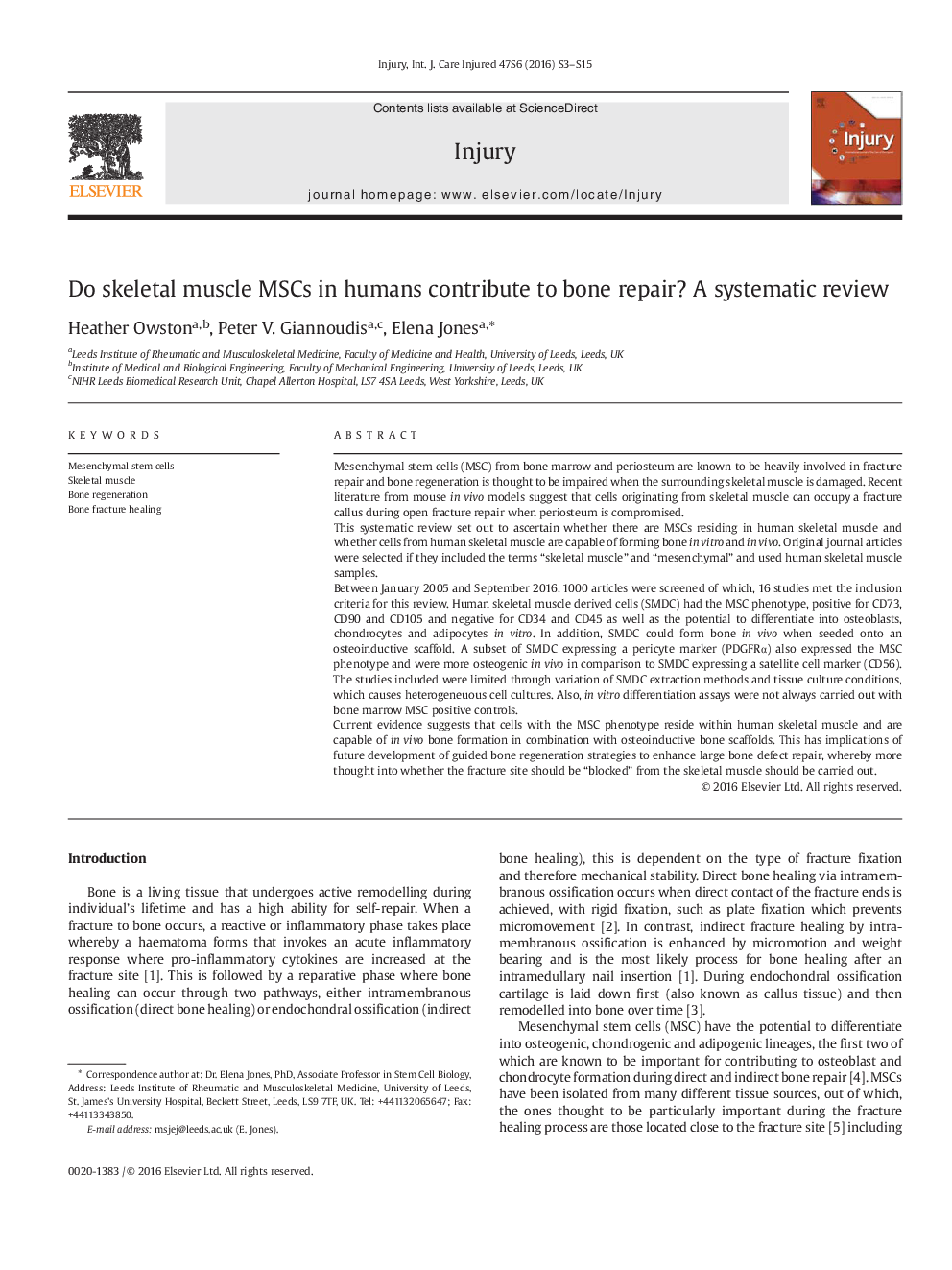| کد مقاله | کد نشریه | سال انتشار | مقاله انگلیسی | نسخه تمام متن |
|---|---|---|---|---|
| 5653005 | 1407232 | 2016 | 13 صفحه PDF | دانلود رایگان |

Mesenchymal stem cells (MSC) from bone marrow and periosteum are known to be heavily involved in fracture repair and bone regeneration is thought to be impaired when the surrounding skeletal muscle is damaged. Recent literature from mouse in vivo models suggest that cells originating from skeletal muscle can occupy a fracture callus during open fracture repair when periosteum is compromised.This systematic review set out to ascertain whether there are MSCs residing in human skeletal muscle and whether cells from human skeletal muscle are capable of forming bone in vitro and in vivo. Original journal articles were selected if they included the terms “skeletal muscle” and “mesenchymal” and used human skeletal muscle samples.Between January 2005 and September 2016, 1000 articles were screened of which, 16 studies met the inclusion criteria for this review. Human skeletal muscle derived cells (SMDC) had the MSC phenotype, positive for CD73, CD90 and CD105 and negative for CD34 and CD45 as well as the potential to differentiate into osteoblasts, chondrocytes and adipocytes in vitro. In addition, SMDC could form bone in vivo when seeded onto an osteoinductive scaffold. A subset of SMDC expressing a pericyte marker (PDGFRα) also expressed the MSC phenotype and were more osteogenic in vivo in comparison to SMDC expressing a satellite cell marker (CD56). The studies included were limited through variation of SMDC extraction methods and tissue culture conditions, which causes heterogeneuous cell cultures. Also, in vitro differentiation assays were not always carried out with bone marrow MSC positive controls.Current evidence suggests that cells with the MSC phenotype reside within human skeletal muscle and are capable of in vivo bone formation in combination with osteoinductive bone scaffolds. This has implications of future development of guided bone regeneration strategies to enhance large bone defect repair, whereby more thought into whether the fracture site should be “blocked” from the skeletal muscle should be carried out.
Journal: Injury - Volume 47, Supplement 6, December 2016, Pages S3-S15